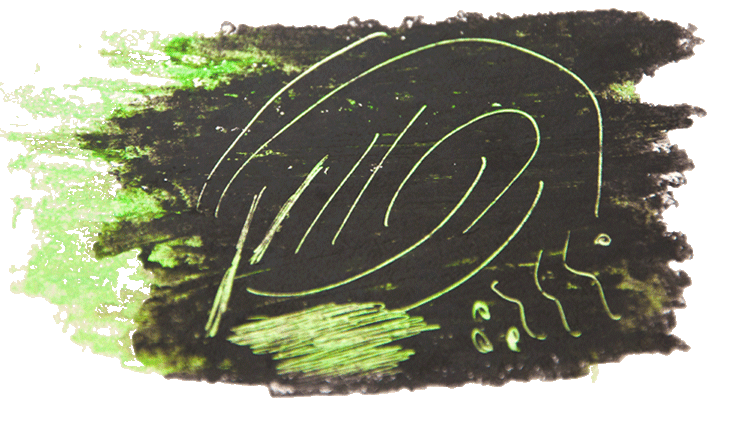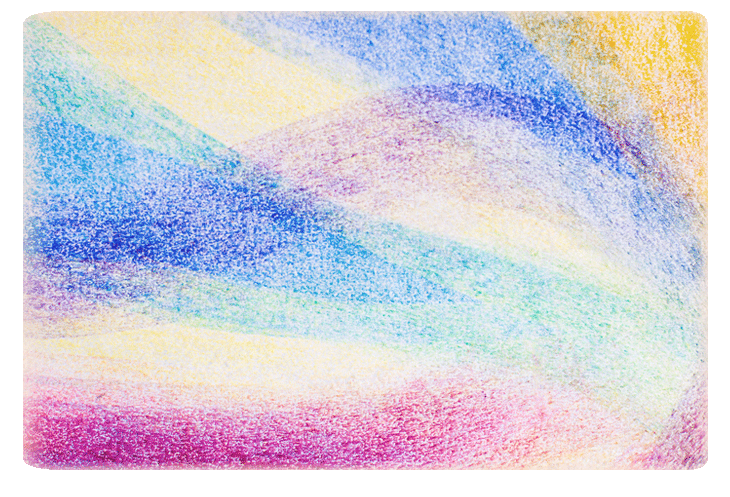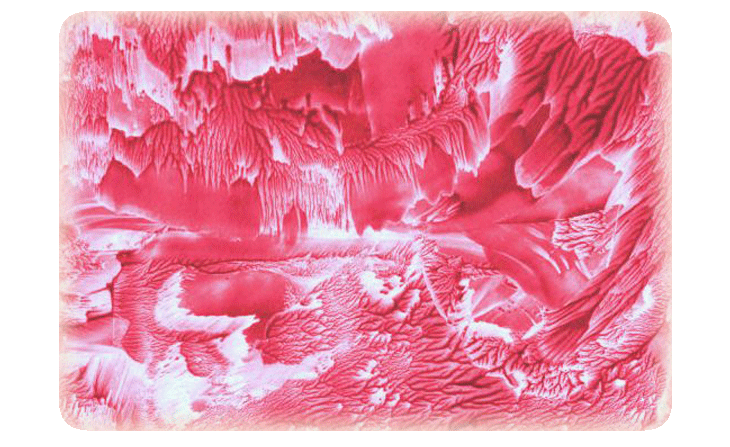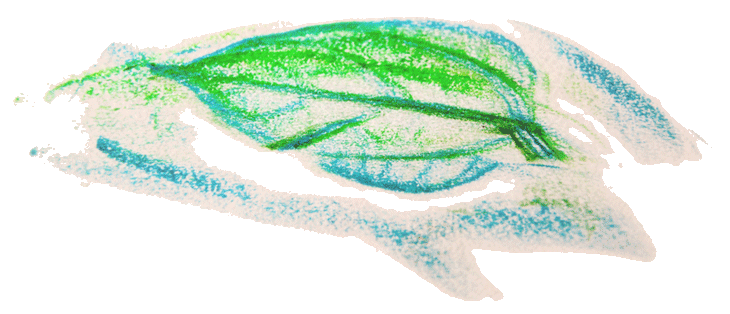
Beeswax Crayon
There are essentially three techniques to using your crayon: 1. Sgraffito, 2. Overlapping layers, 3. Encaustic.1. Sgraffito
This technique is particular as pigment previously applied to the support is removed through scraping with sharp objects. In other words, it is the "subtraction" of pigment from the paper. The sgraffito can also be used when you paint a colour over another colour. Scrapping the top layer, you can reveal the colour that is laying underneath. See example below.
2. Overlapping layers
Applying a layer of colour over another. Depending on the pressure applied, you can either leave a transparency and both colours to be seen or you can discover/create a new colour.
3. Encaustic
There are many different ways to do an encaustic painting/drawing. The most important factor is that the heat has to be applied to the crayon so it melts on the paper. You can apply the wax already in a liquid state, with a brush. To do that, you melt a little bit of the crayon over a hot plate. Or you place the paper directly over the hot plate (it is recommended to put something between the hot plate and the paper, such as newspaper). You can also apply the crayon directly on the paper, and then, with a iron or a hot metal spatula, you melt the wax over the paper. It is also interesting to use different textures. Some examples are: placing a rough object underneath the support, such as a leaf or sandpaper and as you apply the crayon over these objects, their texture will emerge.
It is also interesting to use different textures. Some examples are: placing a rough object underneath the support, such as a leaf or sandpaper and as you apply the crayon over these objects, their texture will emerge.
